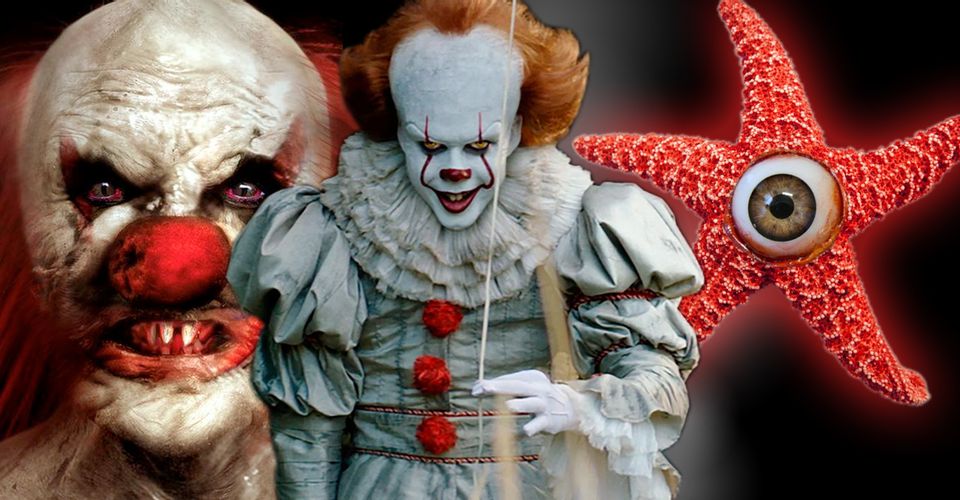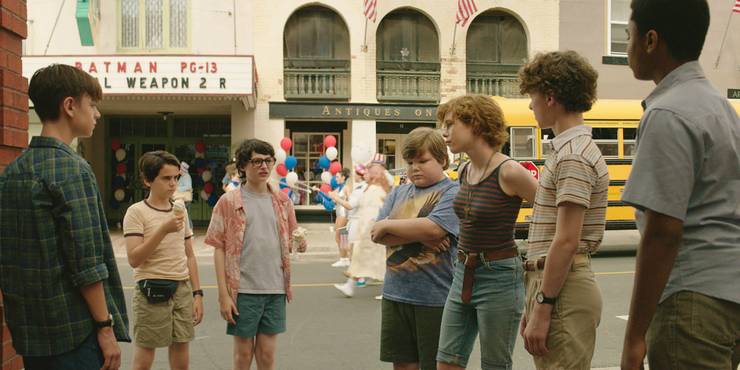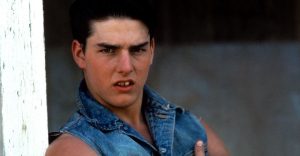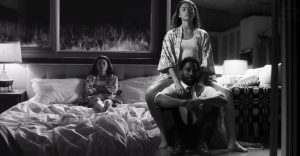The Original Script for IT Was Insane

The IT movie doesn’t pull any punches, realizing Stephen King’s chilling book with R-rated fervor. But had it used one of the earlier scripts, it could have been so much scarier – and batsh*t insane.
In real life, IT doesn’t come round every 27 years. Warner Bros. have been trying to make a feature film since 2009, and in 2012 nabbed Cary Fukunaga (best known for helming every episode of True Detective Season 1) to direct. He worked on the film for the better part of four years, seeing it very close to production. His version, which would have had Will Poulter as Pennywise, was eventually scrapped when Fukunaga stepped away from the project, reportedly after Warner Bros. started meddling with his idea; per her statements, they wanted something more focused on horror conventions than his weightier, darker drama.
Two of those drafts he did with writing partner Chase Palmer – one from 2014 and another from 2015 – have made their way online and now the resulting film – directed by Andy Muschietti based on a script from Gary Dauberman (of which an early 2016 draft has also done the rounds) – is in cinemas we have a proper idea of the crazy that was cut. Today we’re going to take a look at what could have been, looking at all three versions (which will be referred to by year of submission).
Stephen King fans may want to look away because we’re going to see something playing very liberally with the source.
Many of The Original Ideas Are Still In The Finished Film

Before we begin, it’s worth noting the similarities between Fukunaga’s film and Muschietti’s. It’s almost accepted as fact by many in King fandom who eagerly anticipated the original version that most of the ideas were totally scrapped, leaving Fukunaga’s IT destined to be an eternal “what if?” project. And while there are many, many crazy things that have been cut, much of the core remains. Palmer and Fukunaga still have a screenwriting credit on the released movie and it’s not just studio obligations.
Most fundamentally is the basic structure – having teenage and adult Losers as separate movies (originally subtitled The Losers Club and Pennywise, now Chapter 1 and Chapter 2) and updating the setting from the 1950s and 1980s to 1980s and 2010s respectively was Fukunaga’s baseline pitch. But further, many of the places where the film deviates from the book – Bill, Richie, Stan and Eddie are already firm friends at the start, Henry Bowers becomes a more overt antagonist, IT embodies more fundamental fears instead of horror icons – originate in Fukunaga’s original 2014 draft. And that’s nothing on the amount reused dialogue and very concept of a more Harlequin Pennywise (albeit originally with a more ravaged design).
Related: Andy Muschietti’s On How His IT Evolved From Cary Fukunaga’s Draft
Those are big picture plot points, of course, and none go too dark; they’re all things Warners were clearly OK with. When you go deeper you can see where the controversy began.
The Early Drafts Are More Sexual

Fukunaga’s vision is typically described as more psychological and sexual, and boy that’s definitely true. You see this most prominently with Beverly, who was going to have an explicit abuse story with her father – in early drafts the scene when he assaults her is flat-out attempted rape, with the 13-year-old described as having her clothing removed before escaping. This is, of course, implied to be under the influence Pennywise and, in the 2015 version, IT actually spared his life as a child explicitly knowing he’d go on to cause her more misery.
But, beyond that, overall there’s a stronger sexual undercurrent to the entire story. In the 2014 draft, IT is first seen as a masturbating woman emerging from menstrual blood and in 2015 Richie is heavily implied to be bisexual, possibly gay.
Of course, sexual awakening does remain in part in the 2017 version. Beverly is repeatedly (and falsely) accused of being a slut and is perved on by various people around town, and in a less insidious sense her part in the group has a big impact on the boys, leading to a subtle love triangle between her, Will and Ben. It’s just not quite a skin-crawling as what came before (although it’s worth also stating the controversial sex scene from the book was never involved).
This wouldn’t have just been sex for sex’s sake, though. The whole point of these elements was to hammer home the deep-set psychological damage IT’s presence has done to Derry, which runs through a lot of the initial pitch; the creature in Fukunaga and Palmer’s drafts takes the form fundamental, grounded fears, with anything more extreme (Pennywise besides) occurring offscreen.
Fukunaga Wasn’t Going To Be Too Faithful to the Book

These tonal deepenings and highly mature coming-of-age story are backed up by shifts to various character’s arcs – Mike and his father’s relationship and their link to the past is a centerpiece in the 2014 screenplay, while Stan’s bar mitzvah is a key plot point – allegedly somewhat inspired by the writers’ childhoods that altogether would have led to a film incredibly distanced from the source novel. And this was totally the intention; Fukunaga had character names changed for no clear narrative or thematic purpose and in the 2015 draft made Stan a goldfish. Comparisons have been made to Stanley Kubrick’s The Shining, using the basic plot outline of King’s book to tell a different story, and that assessment’s not too far off. Had either screenplay been made, you can bet the author wouldn’t have been quite as high in his praises.
Related: IT Movie: Remake or Readaptaion?
On the flipside, Dauberman’s 2016 take veered incredibly close to the 1990 miniseries, with several scenes overtly referencing some of Tommy Lee Wallace’s creations. Muschietti has since revealed he doesn’t much care for the TV effort, suggesting these were cut down on his insistence. Indeed, for all it took from Fukunaga’s version, the finished film is much closer to the book’s story. Although we’re yet to really get into the true crazy stuff.
- IT (2017)Release date: Sep 08, 2017
1
2
About The Author


















